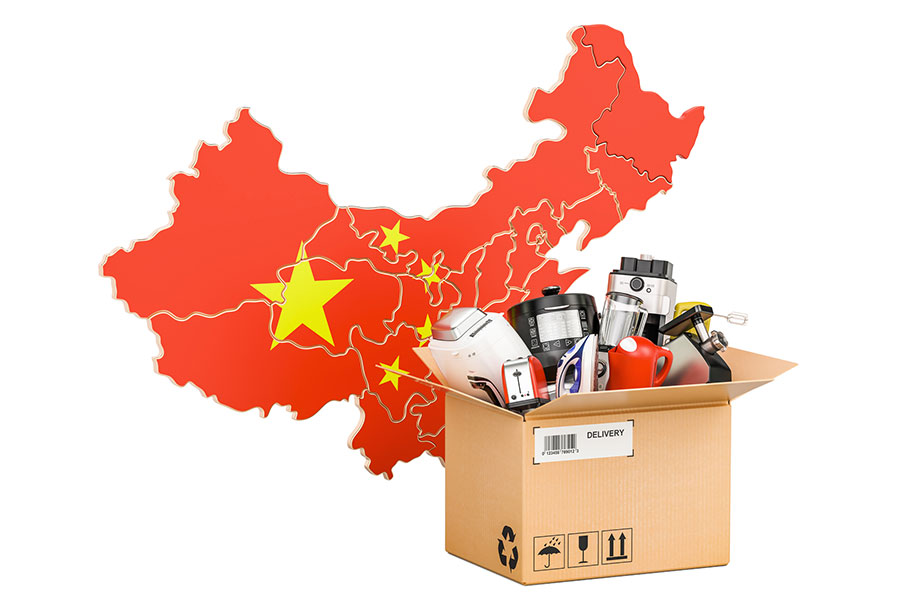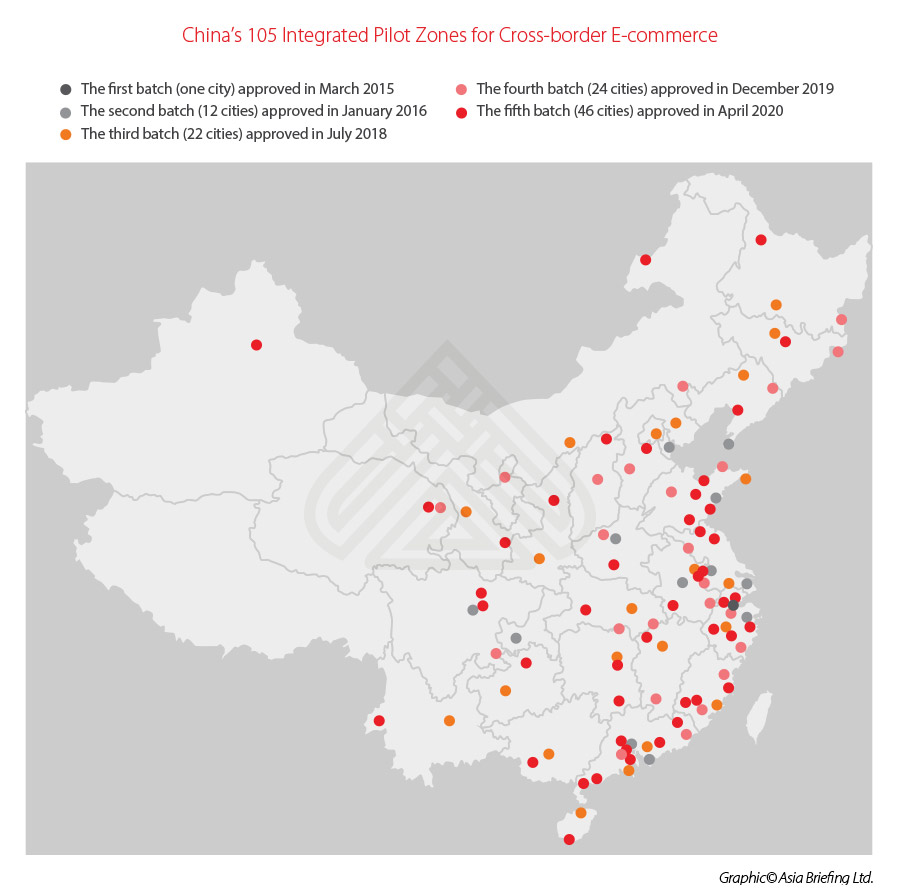China’s Free Trade Agreements Along The Belt & Road Initiative
Developing Supply Chains Are Reflecting Growing Chinese Influence

Op/Ed by Chris Devonshire-Ellis
The elimination of tariffs and taxes is always a boom for exporters and is something that China has taken advantage of very effectively over the past two decades. When China first began its journey towards becoming the massive manufacturing giant it is today, it attracted foreign manufacturers, from which the Chinese could learn, by eliminating or cutting profits tax rates for up to five years’ worth of profitable operations. This represented something of a boom time for foreign businesses in China and kick-started the entire Chinese economic growth. China has also been very busy in agreeing Double Tax Treaties, which often contain clauses and reductions in taxes beneficial to the respective party’s trade. China has also been active when it comes to participating in Free Trade Agreements; it has significant and wide-ranging deals with the likes of ASEAN, Australia, Singapore, South Korea, and New Zealand among others and is actively engaged in negotiating several more. These are important because they can and do direct and massively influence bilateral, and in some cases multilateral trade patterns. Taken overall, FTA impact upon and are the structural support for all global trade.
The current trade and tariff tensions between China and the United States has seen a resurgence of Chinese interest in developing free trade routes, and especially along the Belt & Road Initiative. While not all products, and especially IT and hi-tech related components currently obtained from the US will be available from new suppliers, China will be investing in developing these, most notably with Russia. Meanwhile, staple items including energy resources, food and other consumables will increasingly be sourced from markets closer to home. That fits exactly in with China’s ‘Dual Circulation’ Strategy and moves to reposition the economy as a consumer, rather than manufacturing, based economy. This has very specific implications for businesses wishing to sell to China.
Consequently, the issue of Free Trade along the Belt & Road Initiative is a matter of keen interest. In fact, some agreements that impact this are already in position. Others are pending. This is an overview of how things stand at this moment in time.
The China-ASEAN Free Trade Agreement
This agreement has been in force since 2010 and was expanded in 2015 to incorporate an extension into the economies of Cambodia, Laos, Myanmar and Vietnam, who had asked for more time to adjust. This agreement covers both goods and services provided by the above nations as well as China, Brunei, Indonesia, Malaysia, Philippines, Singapore and Thailand and essentially eliminates tariffs on some 95% of all traded goods and services. This covers much of the Belt & Road Maritime Routes. This FTA was also upgraded earlier this month to improve mutual market access.
China, Hong Kong Macau Closer Economic Partnership Agreements
Although Hong Kong and Macau are part of China, they have different customs and tax regimes. To cater for this, and also recognize the status of Hong Kong and Macau, these CEPA agreements have been entered into between them and China, which in certain cases provides investment incentives, especially in service areas, that only companies registered in Hong Kong and Macau can benefit from. These include tax reductions as well as preferential market access to otherwise restricted investment areas in mainland China. Both Hong Kong and Macau are part of the Greater Bay Area, a huge financial and trade services hub, with Hong Kong having the potential to provide wealth management services to the estimated US$3 trillion in mainland private Chinese hands.
The China-Pakistan Free Trade Agreement
This came into effect in 2009, and has formed the backbone of Chinese investment into Pakistan. A direct result of this has been the Chinese development of Pakistan’s Gwadar Port, as well as the “China-Pakistan Economic Corridor” which ultimately aims to link China rail from Kashgar in its south-western Xinjiang Province through to Pakistan’s rail networks at Islamabad. This route will allow Chinese goods to exit via the Arabian sea. To date much of the investment has been from the Chinese side.
The China-Gulf Co-Operation Council Free Trade Agreement
This deal, between China, and the GCC member states of Bahrain, Kuwait, Oman, Qatar, Saudi Arabia and the United Arab Emirates, is still under negotiation. It includes details of goods and services, however given the nature of the GCC economies is largely focused on energy. However, tourism and services are expected to be a large part of this, especially as the United Arab Emirates includes Dubai, a popular destination for Chinese tourists and businesses wishing to reach out into Arabia. The ninth round of discussions were concluded recently in Riyadh, and it is understood that most major points have been agreed.
The China-Sri Lanka Free Trade Agreement
This agreement is still under negotiation, although China has been investing in Sri Lankan Ports and road infrastructure for some time now. The country is also a preferred destination for increasing numbers of Chinese tourists. There has been some resistance to this proposed FTA in Sri Lanka, notwithstanding recent scandals involving Chinese investment in the main Colombo Port. Sri Lanka is coveted by both China and India as a base for transshipment. China has large port investments Sri Lanka’s East and West coast and has designs on the country being an auto component player as well as a back office financial services hub, offering R&D facilities for financial houses based in Singapore and Hong Kong. .
The China-Georgia Free Trade Agreement
This agreement, which gives China access to the Caucasus markets and through to the Black Sea, was “substantially concluded” as at the end of 2016. The agreement will mean that “Chinese enterprises and consumers will have greater access to high quality products like wine and fruits from Georgia, while Georgians will benefit from cheaper China-made industrial products” according to Chinese Commerce Minster Gao Hucheng. Chinese buyers have already been to Tbilisi looking at purchasing products. However, a word of warning – the prices offered have been relayed to me as being so low that there is very little profitability in China trade for Georgian farmers and producers. It remains to be seen what impact this has on the Georgian economy – other countries such as Armenia, Azerbaijan and Turkey will be studying this closely.
The China-Eurasian Economic Union Free Trade Agreement
This agreement was signed off last year, although the real meat of the deal – which product categories will be included, is still under negotiation. When agreed, it will effectively bring the Free Trade of Chinese goods right up to the borders of the European Union. The EAEU is a trade bloc, rather like ASEAN, but comprising of Armenia, Belarus, Kazakhstan, Kyrgyzstan and Russia. If the EAEU were a country, it would be the fourth largest global economy, with a GDP in excess of USD4 trillion. China is keen to get a deal done as these countries, and especially Kazakhstan, Russia and Belarus, offer China uninterrupted transportation of goods from China right up to the borders of the European Union at Brest, in Belarus, where Poland, and rail and road infrastructure leads directly to Germany. This would be a significant trade development and would change the course of EU supply chains. In the meantime, Singapore is has signed an FTA with the EAEU while Vietnam and Serbia have already done so. The momentum for trade development with this particular bloc is highly significant, and interconnectivity with Far Eastern Russia in particular is rapidly improving.
The China-Regional Comprehensive Economic Partnership Agreement
This agreement is between the ten member states of ASEAN (Brunei, Cambodia, Indonesia, Laos, Malaysia, Myanmar, Philippines, Singapore, Thailand, and Vietnam) and the six countries with which ASEAN has existing free trade agreements (Australia, China, Japan, New Zealand, and South Korea). As such, it is a purely Asian deal. Benefits extend beyond trade, with the less wealthy ASEAN members of Cambodia and Laos in particular able to take advantage of improved rules of origin regulations that will see some finishing of products carried out there from wealthier nations such as Australia and Japan, where the labour is more expensive and traditional crafts have been mechanized. For more on what RCEP means for businesses in China, click here.
China’s Border Development Zones
In addition to actual Free Trade Agreements, China is also busy developing specific zones, which are duty exempt and used to encourage the joint development of Chinese and other foreign companies in making end products using expertise from both. Examples are the newly announced Heilongjiang Free Trade Zone on the border with Russia, and the Khorgos Gate FTZ in Kazakhstan. China has also opened 46 cross-border ecommerce zones in 2020, right around the perimeter of the country, bringing the total to 105.

As can be seen, the emergence of China’s enhanced Free Trade Agreements is an important component part of the Chinese economy. Manufacturers in any of the countries impacted by the Free Trade Agreements mentioned above should be looking with renewed interest at the prospect of them developing a consumer market in the country.
Related Reading
About Us
Silk Road Briefing is written by Dezan Shira & Associates. The firm has 28 offices throughout Asia, and assists foreign investors into the region. For strategic advisory and business intelligence issues please contact the firm at silkroad@dezshira.com or visit www.dezshira.com





